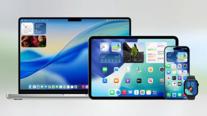Apple Unveils Expansive Updates at WWDC 2025: Highlights and Lowlights
The recent Worldwide Developers Conference (WWDC) showcased Apple's commitment to enhancing its software ecosystem, introducing substantial updates across its platforms. Among these updates, highlight features include a striking new Liquid Glass design, improved AI accessibility for developers, and notable enhancements across multiple operating systems.
Instead of re-listing every feature from the event, let’s delve into a personal selection of the best and worst features across Apple’s platforms, based on a thoughtful analysis of their innovations.
Best Features
- Spotlight Enhancements: The significant upgrades to Spotlight have been met with enthusiasm. This tool has long been a favorite among power users, and its enhancements indicate that Apple recognizes and targets this demographic without compromising the overall Mac experience. The Palm integration reflects a shift toward more powerful built-in features, potentially diminishing reliance on third-party launchers.
- Spam Filtering in Messages: This feature has been long awaited, as it brings much-needed relief from the flood of spam. The ability to segregate unwanted messages into a different space simplifies user experience and enhances digital communication.
- Improved Windowing: With enhancements that allow users to manage windows more effectively, Apple has embraced familiar multitasking paradigms, promoting a more productive workspace across devices.
- Configurable Widgets: The freedom to customize widgets opens up new possibilities for users who want to personalize their dashboards and access the information most relevant to them.
- Widgets Across Interfaces: The integration of persistent widgets throughout the workspace exemplifies Apple’s commitment to spatial computing. This forward-thinking design philosophy adds a layer of interactivity that is exciting for users.
- Still a tvOS: While it received minimal attention, the continued support and updates indicate that Apple remains committed to the Apple TV platform amidst the larger transformations across its software landscape.
Worst Features
- Disappearing Menu Bar: A throwback to past design choices, the decision to obscure the menu bar is perplexing. This vital element of the macOS experience should remain visible and accessible to enhance user navigation and interaction.
- Tapbacks in CarPlay: While it’s a minor annoyance, introducing extras that target personalization in a driving environment could create distractions. Safety should remain a priority, and this feature seems inconsistent with that principle.
- New Games App: While the new app enriches gaming experiences, the over-promotional approach may dilute its value. Users may perceive it more as an advertisement than a genuine enhancement to gaming experience.
- Workout Buddy: Virtual encouragement can feel disconnected from the actual human motivation one receives from a traditional coach. This feature’s robotic enthusiasm may lack the emotional and motivational support users desire.
- Apple Music's Karaoke Feature: While karaoke can be a fun activity, the element of sharing potentially poor singing performances could lead to discomfort among users, reducing the appeal of this new feature.
Developer Tools and Frameworks
Alongside user-facing adjustments, Apple also introduced powerful tools for developers, enhancing their ability to create engaging applications:
- Foundation Models Framework: This enables developers to incorporate sophisticated AI functionalities into apps while ensuring user privacy and offline accessibility.
- Xcode 26: The latest version includes integration with large language models, emphasizing Apple's commitment to facilitate a smoother coding experience.
- Innovative Design with Liquid Glass: The new design material allows a blend of aesthetic appeal and functional ease, encouraging developers to create visually striking applications.
As Apple prepares to roll out these updates later this year, the intriguing blend of innovative enhancements with familiar usability principles fuels anticipation among users and developers alike. WWDC 2025 not only demonstrates Apple's enduring influence over the tech landscape but also provides a glimpse into the company’s vision for future software.
Conclusion
These adjustments reflect Apple’s efforts to balance cutting-edge design with user-friendly functionality. As we await further refinements and feedback from the upcoming public beta, Apple's trajectory indicates a concerted effort to maintain its innovative edge while nurturing a connected and engaged developer community.
Bias Analysis
Key Questions About This Article




